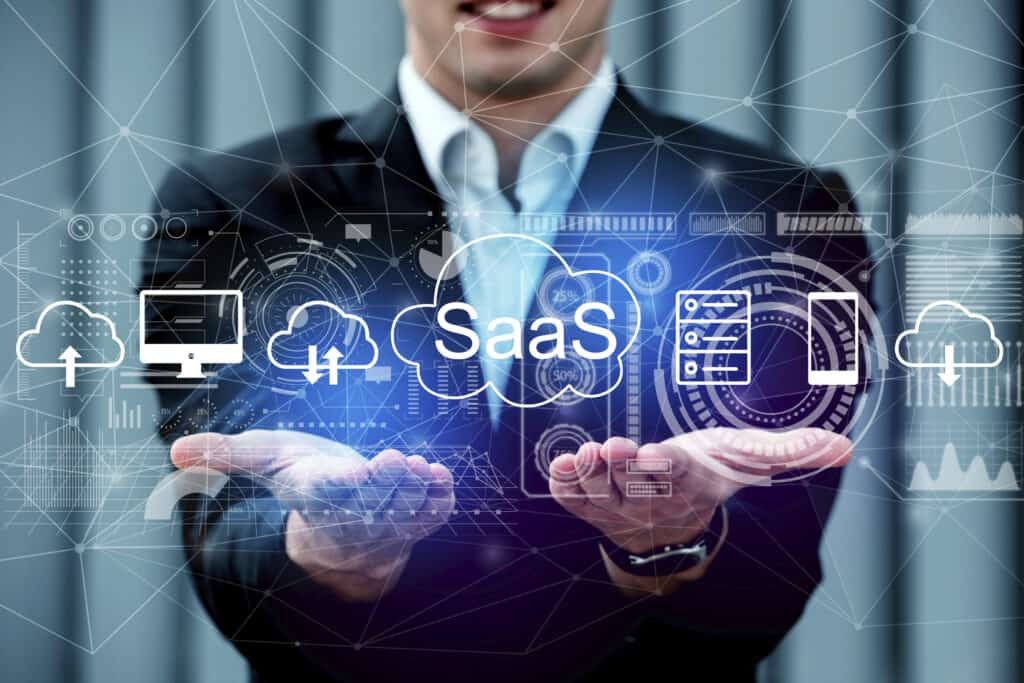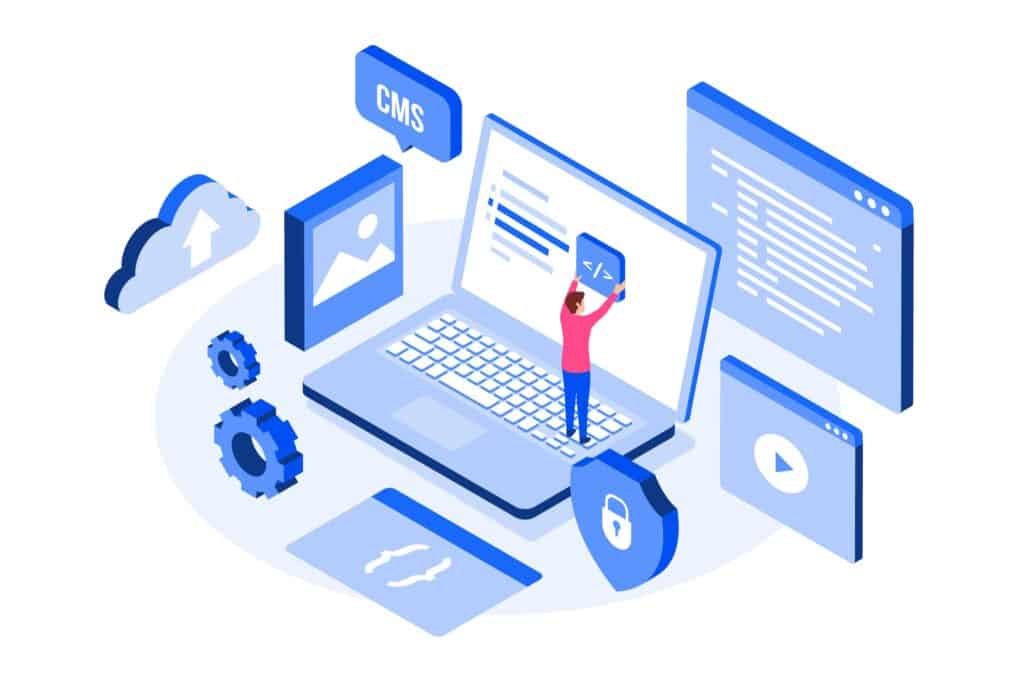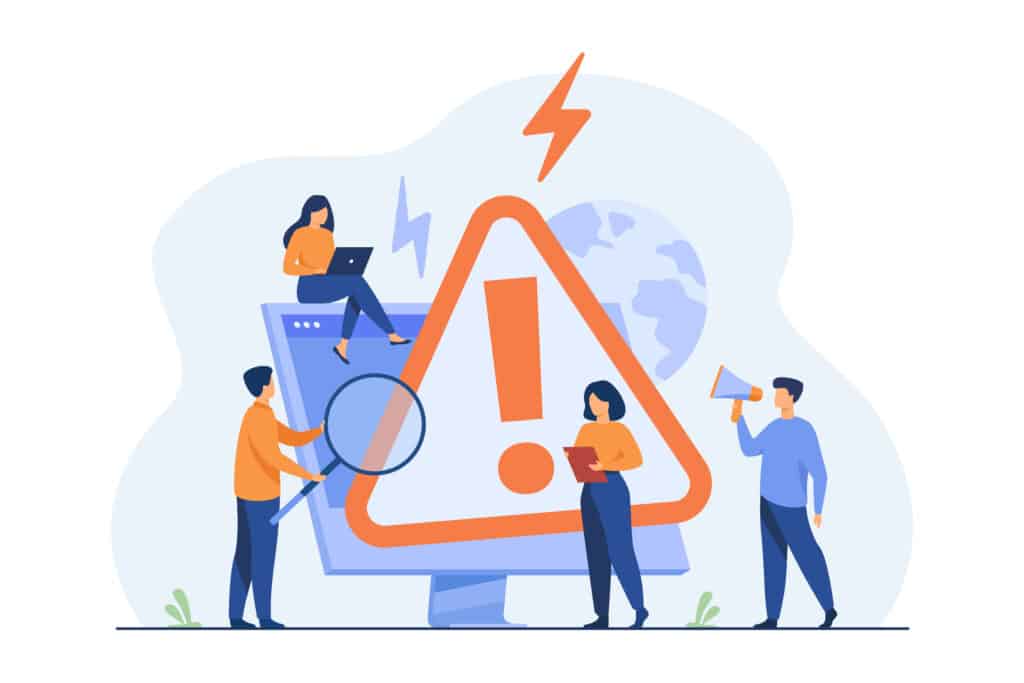Compliance with different types of software licenses is a significant issue for IT organizations. When an organization chooses to purchase software licenses, it is legally bound by the terms of the software license, sometimes known as an end user license agreement (EULA).
If a software vendor suspects that you are not in compliance with the terms of their software license agreement, they may request that a software audit be performed.
In fact, survey results published by Gartner Research indicate that 68% of enterprise organizations received at least one software audit request from a vendor in the past year. If you are overusing proprietary software without paying the proper licensing fees, a failed vendor audit can result in expensive fix fees, audit costs, and hefty fines and penalties.
For IT organizations, understanding software license types is a necessary step in accurately interpreting software license terms and conditions and ensuring ongoing compliance.
Familiarity with software license types is also important to reduce wasted IT spending.
In this article, we introduce you to all the different types of software licensing models, including the most commonly used as well as some of the more complex types of enterprise software licensing models.
We hope we can help clear up some misunderstandings around license models, as we often see them being spoken of quite vaguely. You might learn that some of them aren't even licensing models to begin with.
In total, we present 18 license models, but if you know of a license model that is not mentioned here, please let us know!
What is software licensing?

When a software company releases a new software application, that software is copyrighted under United States intellectual property laws.
As owners of these copyrights, software companies have the exclusive right to control the use and distribution of the applications they create.
A software license is a legally binding agreement between a software vendor and a company or IT organization that wants to use its software products. It sets out rules, requirements and guidelines for both parties, particularly regarding how the licensee may use the software, how usage costs will be determined, and the extent to which the licensee may copy, modify or distribute the software.
How does software licensing work?
New users of a software will normally enter into an end user license agreement (EULA) which constitutes a legal definition of the relationship between the licensor (vendor) and the licensee (user or company). The EULA is an agreement that sets out the buyer's rights to install and use the software.
Each EULA contains a clause that stipulates when its conditions are activated by an end user. This could be the moment the user opens the product packaging or, for example, when the user clicks a button agreeing to accept the terms of the EULA to access the product.
Cloud-based applications such as Software as a Service (SaaS) often include license details in EULAs, including:
- Monthly or annual charges per user;
- Duration of the agreement;
- Contract cancellation terms;
- Recovery of any charges if canceled during the contract.
Discover all types of software licensing models

1- Perpetual license
Perpetual Licensing is the most traditional software licensing model. In this model, the customer buys the software once and keeps it forever. Customers typically prepay for the license and sometimes pay an annual maintenance fee. An advantage of this license is that customers know the exact amount they need to pay, without being surprised by price changes on a subscription model. After purchasing a perpetual license, customers typically host the software on their servers. Today, many companies are moving away from traditional perpetual licenses to more flexible subscription models (eg Microsoft Office Suite).
Historically, the perpetual licensing model has been very common because it was one of the original licensing models. However, software vendors are moving away from it as there are more effective licensing models that allow software vendors to improve the way they monetize their software applications.
2- Subscription license
A subscription license is one where the end user licenses the application on a recurring basis for a defined period. This can be 30 days (a monthly subscription) or 365 days (an annual subscription).
Subscriptions typically do not have an expiration or expiration date and are automatically renewed after the initial term.
Subscription license is one of the most common license types. One of their advantages is that they are easy for the customer to understand when making a purchase decision, as many people have become accustomed to them with conventional services like Netflix.
On the other hand, the subscription model isn't always versatile enough if you want to license your app in a more specific way. Click here for alternatives to the subscription model.
3- Floating license
Floating resource licensing allows a customer to purchase multiple licenses while limiting the use of specific resources between users at the same time. This software licensing model allows companies to be flexible in their use and choice of features and therefore save money.
A floating license works on a first-come, first-served basis and is a great way to let your client share licenses among a group of people.
It is also useful to note that when tracking license usage in a floating pool, if users try to check out a license but all licenses have been consumed, this creates a huge sales opportunity for you as a vendor as demonstrates that there is more demand for licenses.
4- Measured License
A metered or consumption-based software license is one where the software vendor charges licensing fees based on how often users access application-specific resources, data, or other resources.
Software vendors can measure factors such as total usage time, number of database queries, number of CPU cycles consumed, or amount of data stored, and then charge their customers based on how they used the software.
Some limited software licenses require customers to prepay for usage and then withdraw the prepaid amount using the software. In other cases, the customer uses the software on an as-needed basis and receives a monthly or quarterly invoice based on total usage of metered software resources.
Some IT organizations dislike metered licensing because the cost of software increases as the business becomes more dependent on it. Others may like metered licensing because it offers flexibility for users and devices while tying total cost of ownership to actual usage and reducing waste.
A limited license can be applied to control access to things like:
- Number of logins in an app
- Number of CPU cycles consumed. This is ideal for use in scenarios where CPU-intensive workloads need to be enabled or controlled according to license terms. A practical example of this is rendering jobs for simulation or licensing special effects software applications.
- Number of times a data item is accessed (for example, a BIM model or a .png file)
Overall, metered licensing is an incredibly flexible way to control access to your app.
It is also worth noting that the metered license model often encompasses or overlaps with some of the other license models (eg “time of use” license). This is simply because many license models focus on a particular feature, function or aspect of the application, which can be measured.
In many of these licensing models, the focus is on time. And since time can be measured, these licensing models are really just subsets of the measured licensing model, as in the case of the time-of-use license.
5- Time-of-use license
As mentioned, in the time-to-use licensing model, a license is defined by the time a user is granted access to an application.
Time can be measured up to a certain point, after which the license is no longer valid and the application cannot be accessed. The user may be prompted to purchase another airtime license or switch to another license type that does not have time restrictions. Alternatively, the user can be notified in advance that the license is due to be renewed soon.
Another term you may have heard of is consumption-based licensing, where the user pays for actual use of the software. However, in practice, consumption-based licensing is just one way to implement the metered licensing model.
6- Aggregate use time license
An aggregate usage time license is used to limit the total usage time of an application. The main idea of the aggregate time leave model is that it counts the accumulated time spent to perform a task and refers to the total hours consumed by a sector or group of workers. It is also a subset of the measured licensing model, again being what is measured.
Providing an aggregated airtime license is very attractive to enterprise customers as it allows them to better control spending on complex projects. For dynamic projects where the progression of each element has third-party dependencies, delays can often force organizations into a software-over-licensing state – software that is being paid for but not used.
With an aggregated airtime license, the software can still be made redundant while workflows are coordinated, however the key difference is that the software is not eating up the budget. Some low-cost prospects will not use your product continuously, and extending the lease period can be very expensive, with some prospects only willing to pay for the amount of your product they actually use – regardless of how long they own your product. .
With an aggregated airtime license, an organization can purchase a total number of licensed hours, and that time allocation can be consumed by any number of users. That's why the aggregate usage time license type is literally a money saver.
7- Resource license
If you want to provide your customers with a highly flexible type of licensing agreement, then feature-based licensing is the way to go. This template allows for ultimate control over which features can be used in each license code, allowing for customization as per the needs of each employer or user.
8- Fixed Duration License (FDL)
As the name suggests, a fixed term license is simply a license to software for a defined period of time.
9– Project based license
A project-based license is designed to support collaboration between multiple people working for different companies.
In the project-based licensing model, the customer purchases a master license from the licensor and then grants project team members access rights to the licensed application. These team members can access the app with the primary license even if they are part of a different company or organization.
10- Trial license
A trial license is like a fixed term license, but with the main difference that you are allowing access to a user to allow them to test your application with the hope that they will purchase a license. Users expect to be able to try a software application before purchasing it. This trial period can last for a few days or a few weeks, but with the recent explosion of online consumer and business products, offering a free or 'money back' trial has become the expectation.
The trial period is usually set in advance. The trial license also allows you to control which features or aspects of your app can be accessed during the trial period.
11- Academic License
An academic license is not really a distinct license model. Rather, it's a license given to a distinct group of people, but because it's so popular, we've included it on this list.
The academic licensing model is typically used by companies that provide educational or engineering applications to schools and universities. It provides access to an application for this specific group of users, and the license often has different commercial terms (lower cost, free use, limited access to some features, etc.).
Academic licenses are very similar to trial users in that they are provided for free or at a reduced rate to encourage the use of a number of applications by student users or, better yet, the use of an application by academic researchers and professors who use it themselves and use it as a teaching tool for their students.
The basic idea here is that if a student becomes familiar with a software application while at university, they are more likely to use that same application when they enter the professional workforce. This is particularly the case for more complex applications such as CAD, CAE, simulation or special effects applications.
12- On-demand corporate license
This license again combines aspects of other licenses to create flexibility for the software publisher.
Example:
With an ODC license, Company X buys 365 days of Product Y to use over a 1 year period. The contract includes a minimum and maximum length of leave an employee can take at a time, but the total usage time for all employees will not exceed 365 days.
13- Company's fixed-term license
This is sort of a combination of a fixed-term license and a floating license.
Example:
Company ABC purchases a 1-year license for Product X. Multiple authorized employees can use the license on multiple different machines, but Product X will only run on one machine at a time. There is no distinct 'license checkout' workflow.
14- Offline use license
With the offline use license, a user can check out a license for a set period of time and online access is not required.
This license is ideal for use in the mining or construction sectors, where the user of an application may be in a remote area where internet connection is not possible. The time for which a license can be withdrawn is fully configurable by the vendor – it can be 1 day, 365 days or whatever the vendor prefers.
15- Whitelist license
A specific set of users can access a product based on a defined whitelist. This is ideal for product testing with selected users.
16- Support and Maintenance License
A support and maintenance license is typically used in addition to a perpetual license and to provide software updates and fixes for a licensed software product purchased under a perpetual license.
17- Anchored license
A tethered license is one where a license is provided to a customer but is tethered to a specific device. The app can only be used on that specific device.
18- Device License
Unlike an anchored license, with a device license there is no human actor involved. A license is granted to use the application on a defined number of devices.
Benefits of software asset management
Software Asset Management (SAM) is a system for maintaining oversight and centralizing control of software licenses in your organization. There are three main benefits associated with software asset management.
Improve oversight and minimize waste
A software asset management program empowers the IT organization with complete oversight of the IT assets within an organization. IT and purchasing managers can identify where licenses are not being used and reduce waste by opting out of renewing excess licenses.
Optimize IT spend and find savings
IT organizations can optimize their software spend and find opportunities to save money by managing software licenses.
Improved license oversight means IT managers can purchase the right types of software license types in the appropriate quantities to meet business needs. They can also identify opportunities to secure volume discounts by renewing licenses in bulk.
Reduce financial and litigation risk with license compliance
Compliance with software licenses is the driving force behind the adoption of software tools from IT asset management. Organizations that violate their license agreements with software vendors can face lengthy audits, costly patch payments, financial penalties, and even litigation.
What is the risk of using unlicensed software?

Giving up on contracting software or “cheating” the contract by downloading the application illegally can be much more expensive. To begin, user data becomes vulnerable, especially on account of phishing (common data theft in pirated software).
With this security hole, your sensitive information can be accessed by malicious users, facilitating criminal practices. Exposure to viruses and malware is in the package, which can cause irreparable damage to your information and cause serious damage.
Instabilities are another problem with pirated programs. They are made even more harmful by the absence of technical support, which is a benefit that only regularized users can enjoy.
In addition to exposure to these numerous risks, the company's credibility is compromised. Your processes may suffer damage and delays that will harm the relationship with your consumer.
